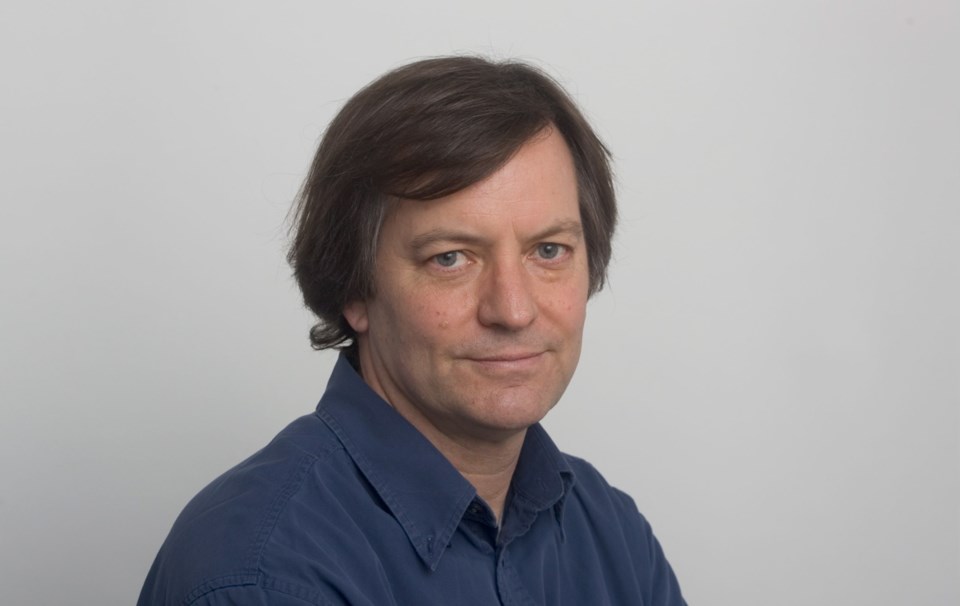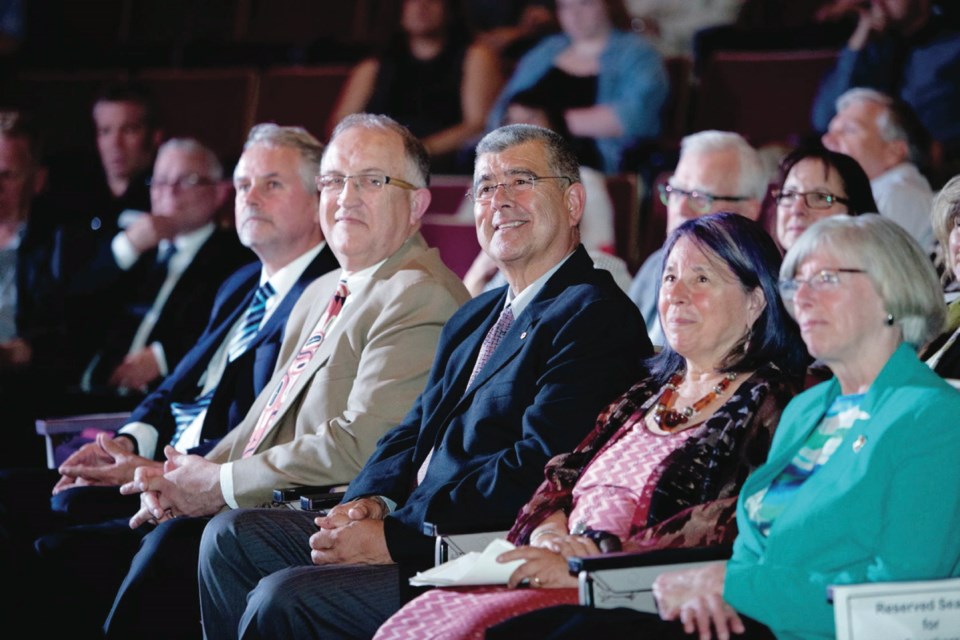During the past six years, Arthur Vickers has created a suite of two chairs and a box to be used in convocation ceremonies at Vancouver Island University in Nanaimo. This project was commissioned by Coast Capital Savings. Last month, the suite was officially presented, with Lt.-Gov. Judith Guichon in attendance, and at that time Vickers was made an honorary doctor of letters. The artist recently spoke with Robert Amos at his gallery in Cowichan Bay.
 Arthur Vickers has created many high-profile art works, including the desk for the premier’s office and Intangible Heritage, an image in 23-carat gold that is on show at the Royal sa���ʴ�ý Museum. These days, Vickers works exclusively with salvaged old-growth cedar, from trees that have been blown down or fallen.
Arthur Vickers has created many high-profile art works, including the desk for the premier’s office and Intangible Heritage, an image in 23-carat gold that is on show at the Royal sa���ʴ�ý Museum. These days, Vickers works exclusively with salvaged old-growth cedar, from trees that have been blown down or fallen.
“My joy is really in wood,” he said. “I love doing everything else I do, but the best part is honouring the wood that has fallen, and giving it a new life.”
Some of the trees fell in windstorms.
“And 50 to 80 years ago,” Vickers explained, “loggers used to drop the huge, really valuable old-growth firs and Sitka spruce right onto the cedars, because the cedars were thought to be of no value at all. You’d maybe get $10 a thousand board feet for cedars. Massive firs were dropped on them, they’d smash them.
“Then, with all of the overburden that piled up, they have been buried. Moss grew on the rubble, and slowly turned into soil with new growth coming out of it. This cedar, which was thought to be dead and finished. …” He ran his hand over it like an old friend.
While buried in the earth, the tannins and resins of the cedar came to the surface to protect it.
“They have sealed themselves and became incredibly sound and stable.” So the wood used for the VIU project is at least 800 years old? “At least,” he affirmed.
The Convocation Suite has three pieces: A bentwood box to hold the diplomas and two chairs, each modelled on the form of a chief’s seat.
“In the old days, the chief’s seat was composed of a huge, flat, heavy board with a back and sides which came up to shoulder height,” Vickers said. “These are going beyond that. The chancellor’s chair is 43 1Ú2 inches to the top.” The arms angle out from the back at seven degrees, and the back itself leans at seven degrees, creating a challenging combination of angles. And, to make it more difficult, he decided to match the grain so that the seat back and sides look like the corner of a bentwood box.
“I think,” he said, “I’m going to push the limitations on this.”
A large box holds the diplomas for the new graduates. This box was made from an immense plank of wood — more than six metres long and two metres wide — found at Holberg on the west coast of Vancouver Island. The wood for the chancellor’s chair is from Ditidaht, formerly known as the Nitinat Lake area. The vice-chancellor’s chair came from Port Alberni. The yew-wood feet are from Beddingfield Bay. Within the grain of these boards is recorded the entire history of the last millennium on Vancouver Island.
With his hook knife, Vickers carefully carved the three cuts, called kerfs, where the plank would bend. Then he took this huge board to an exceptionally large steam box belonging to his friends in Port Alberni. It’s the hot, wet atmosphere that makes the wood flexible.
“The tension in the whole thing, in getting it together, had to be absolutely spot on,” he noted. “Very, very, very tricky.” After the wood is bent into the box shape, its final corner is pinned. “Bending something this big is absolutely terrifying,” the artist admitted.
But that risk and danger make success all the sweeter. The finished box is almost a metre tall and, when he tapped the side of it with the palm of his hand, it sounded with a rich, low resonance. Boom boom boom.
Vickers is on intimate terms with his wood. He can read its language, and understands the wind and weather that shaped the parent tree hundreds of years ago.
“This particular cedar, as it was growing, braced itself against the wind, so that it twisted as it grew. Within this single huge plank, the grain moves from flat to quarter cut to vertical, and back to flat — all the way along this growth.” His powerful fingers caressed the grain.
Each cut piece was sanded by hand to an incredible smoothness, using 5,000-grit sandpaper.
“Many, many, many hours,” he laughed. “And I’m seeing the gold glistening through the wood as I’m sanding.” Vickers holds up a piece of cedar. “Summer growth is the soft area between the winter growth, which is the ring you get showing each year of growth. The winter growth is very compressed. If the tree grew in a very thick forest, the growth rings would be fairly equal and constant. But in the wood you see today there are tremendous differences in growth. We don’t have the forestation that they used to have,” he mused.
“As the wood ages, it goes darker,” he continued, “the cedar darkens and gets richer and richer. And then, the way it glows. Isn’t that amazing!” he sang out. I suddenly noticed glints of gold, flashing within the wood where the grain surfaces. The wood seemed translucent. I felt as if I could look right through it.
“That’s called chatoyance,” he informed me: a changing, undulating luminescence. “Do you see it in the wood, as the light hits it — the sheen of the hard and soft areas of the wood?”
Next week, Vickers describes to me the designs he has drawn in gold leaf onto the three pieces, and his hopes for the students of Vancouver Island who receive their diplomas from the bentwood box.



